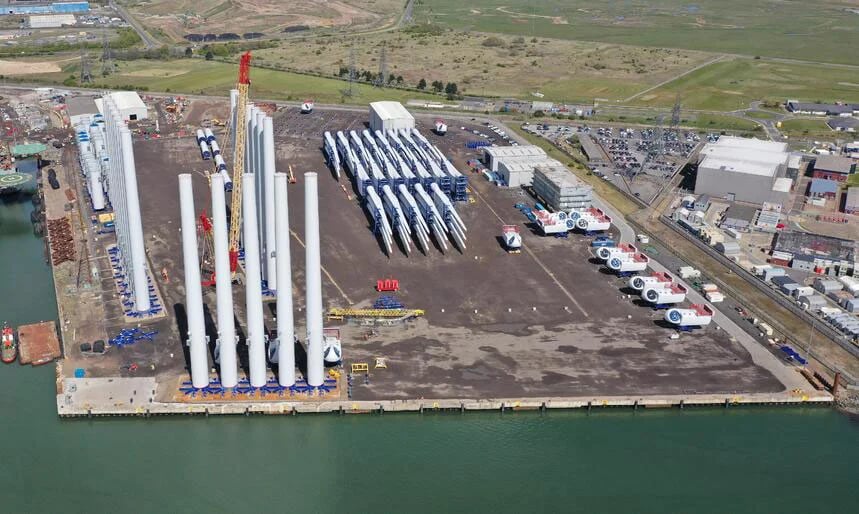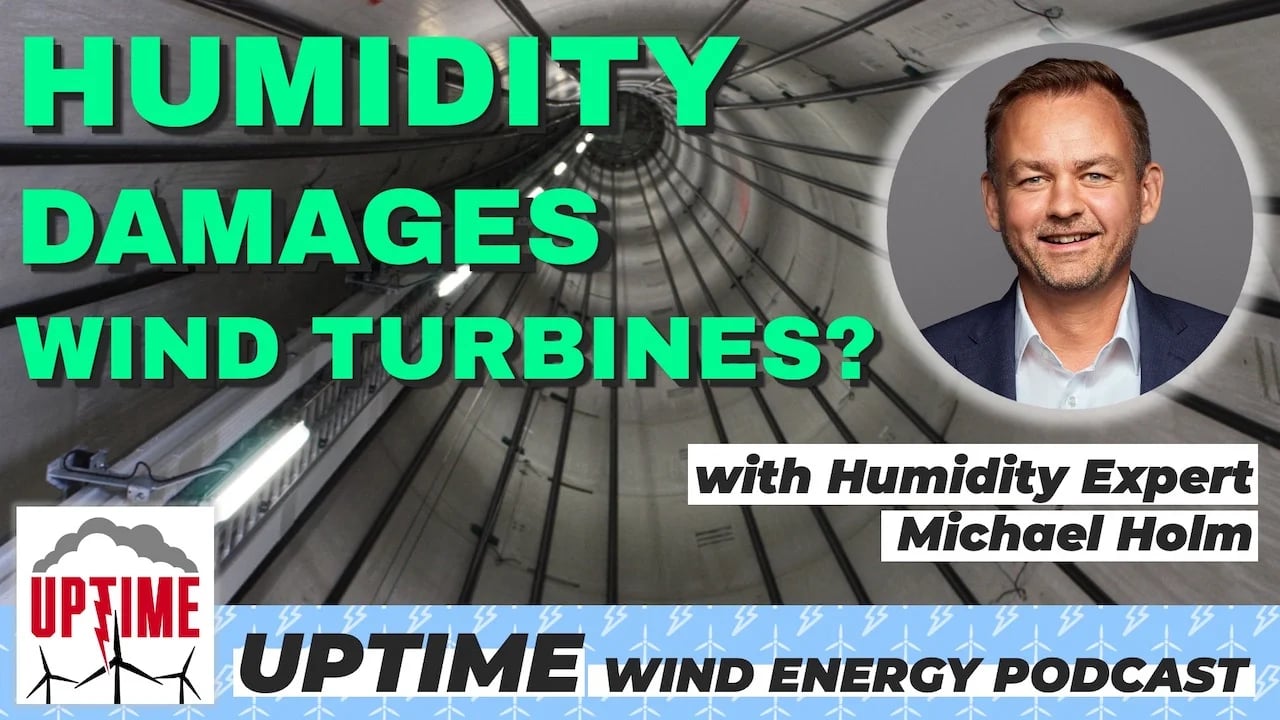Cotes CCO Michael Holm joined the conversation with Dan Blewett and Allen Hall on the Uptime Wind Energy podcast, where the participants share their industry knowledge aiming to raise awareness of the problems caused by humidity inside wind turbines.
During the initial years of an offshore wind turbine, companies often fail to consider what can happen to their assets in the long run - wind turbines are constantly exposed to various climatic conditions. And, although you might not see any humidity-related issues in the first years, these long-term effects will begin to show shortly after, explains Michael Holm, Cotes Chief Commercial Officer. During this wind turbine industry conversation, the three experts focus on how humidity control is often overlooked by companies.
Throughout the podcast, the participants acknowledge the repercussions caused by humidity inside wind turbines, and that, once the first issue is detected, it is already too late as the maintenance costs are higher than the prevention costs would have been.
In the conversation, you can listen to Michael explaining the issues caused by humidity inside wind turbines:
- Electrical systems and water are not a good combination. When condensation water encounters any of the wind turbine's electronic systems, it risks electrical failures, such as arc flashes, and consequently a costly downtime.
- Many of the mechanical components are made of metal (iron, steel, copper and brass), making them susceptible to metal oxidation, affecting the reliability and durability of the components and of the wind turbine. Once corrosion and rust begin to appear, the maintenance costs don't stop.
- Mould growth represents a health risk for any person who needs to go inside a wind turbine.
When does a wind turbine face humidity challenges?
The participants stress the fact that humidity is not exclusively present in operating offshore wind turbines, on the contrary, it initially appears during the transport and construction of the components.

© Vestas Turbine Parts at Able Seaton Port’s Installation Base for the 857MW Triton Knoll Offshore Wind Farm
You have probably asked yourself if humidity affects onshore and offshore wind turbines differently. Of course, offshore installations are much riskier due to the harsh environment, but this does not exclude the fact that onshore wind turbines can also be exposed to rigorous climates with hot days and cold nights, experiencing condensation building up, as the temperature oscillates between day and night; or the wind turbine is installed in a very rainy climate.
The solution against humidity
There is a simple solution, “you need to remove the water from the air”, Michael affirms. By adopting the right dry-air solution, you can save the life of the machine and the electronics inside it.
Cotes supplies adsorption dehumidifiers as a strategy to combat all humidity-related issues inside your wind turbine, which can be achieved by having a well-functioning climate protection system. Michael further explains how Cotes solutions work:
“We use adsorption technology, where silica gel is put it into a big rotor...and the silica gel absorbs the water in the air. Next, the dry air is distributed into the turbine. As the big rotor slowly rotates, it passes by a heat module that evaporates water that is then sent outside the structure.”
Creating overpressure is the most effective way to keep salt-laden air from entering the wind turbine. Air is taken in to create overpressure, as a result, uncontrolled air intake is blocked from entering the structure. When overpressure pulls the air from the outside, the air entering is mixed with dry air, leading the salt to crystalise. Here, the salt crystals are pulled onto a tray and the dehumidifier sends salt-free air into the offshore turbine. Read more about adsorption dehumidifiers
The benefits of dry air
What are the benefits of Cotes adsorption dehumidifiers to your assets? With a variety of innovative, preventive, and proactive solutions to increase the operability of your offshore wind turbines, you will:
- Avoid electrical failures in your turbines
- Avoid corrosion and mould growth
- Keep low service and maintenance costs
- Increase return on investment and reliability
Read more on the benefits of the right dry-air solution
At Cotes, we believe it is important to carry out discussions within the industry; sharing knowledge allows us to grow, gain new insights into the industry’s current issues and to find the best solutions for everyone. Find out more about:
- The Uptime Wind Energy podcast
- Connect with Dan Blewett, Uptime Wind Energy podcast host, on LinkedIn
- Connect with Allen Hall, Weather Guard Lightning Tech CEO on LinkedIn
- Connect with Michael Holm, Cotes Chief Commercial Officer, on LinkedIn
.webp?width=402&height=402&name=Wind_Lineup_01%20(2).webp)

